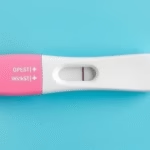Understanding Implantation Bleeding 12 DPO
Implantation bleeding is a term that describes light spotting or bleeding that occurs when a fertilized egg attaches to the lining of the uterus. This event usually happens around 6 to 12 days after conception, commonly known as the implantation window. When we talk about implantation bleeding at 12 days past ovulation (12 DPO), it refers to the likelihood that a woman may experience this light spotting during this specific time frame. Women looking to conceive often pay close attention to any unusual signs during their menstrual cycle, and spotting at this stage could be an early indicator of pregnancy. Typically lighter than a menstrual period and lasting for a few hours to up to a couple of days, implantation bleeding can be easily mistaken for other causes of vaginal bleeding. It is important to understand the characteristics of this bleeding to differentiate it from menstruation and to recognize potential signs of pregnancy.
What Causes Implantation Bleeding?
Implantation bleeding occurs as a direct result of the implantation process itself. When a fertilized egg travels down the fallopian tube and into the uterus, it must attach itself to the uterine lining to begin the process of development. This attachment can cause slight damage to blood vessels in the uterine lining, resulting in light spotting. Most women won’t experience significant bleeding, so understanding the cause can help alleviate concerns about what is happening in their bodies.
The timing of this process is crucial, and it is typically expected 6 to 12 days post-ovulation. Spotting may be one of the first signs of pregnancy for many women, making it a significant event to identify. While the bleeding is generally light, it is a key moment in the conception journey and is often accompanied by other early pregnancy symptoms such as mild cramping or breast tenderness.
Recognizing implantation bleeding specifically at 12 DPO can reinforce the possibility of early pregnancy for women charting their cycles and trying to conceive. It is essential to note, however, that not all women experience implantation bleeding; therefore, its absence does not indicate that conception has not occurred.
How to Differentiate Implantation Bleeding From Menstrual Bleeding
Many women often confuse implantation bleeding with their regular menstrual cycle. However, some key differences can help in differentiating the two. Understanding these distinctions can clarify whether the bleeding is a sign of pregnancy or simply your period.
One of the major differences is the timing. Implantation bleeding usually occurs around 6 to 12 DPO, while menstrual bleeding typically occurs on a predictable cycle. The Flow: Implantation bleeding tends to be much lighter than menstrual bleeding. Instead of the heavy flow characteristic of a period, implantation bleeding often presents as slight spotting or light bleeding. The Color: In many cases, implantation bleeding can appear brown or pinkish, while menstrual blood is often bright red when it first flows.
Duration is also an important factor; implantation bleeding lasts a shorter duration—often just a few hours to a couple of days—compared to typical menstrual bleeding, which can last anywhere from three to seven days. Lastly, accompanying symptoms can help differentiate the two. While menstrual bleeding may come with significant cramping, nausea, and other symptoms related to the menstrual cycle, implantation bleeding is usually accompanied by milder symptoms.
These distinctions can help women determine whether they are experiencing implantation bleeding, which might lead to further pregnancy testing and planning.
What Are the Symptoms of Implantation Bleeding?
Recognizing the symptoms associated with implantation bleeding can play a crucial role in identifying early pregnancy. While this bleeding is typically light, other symptoms might accompany it, indicating that the body is experiencing hormonal changes and adjustments common in early pregnancy.
The primary symptom of implantation bleeding is light spotting, which may occur a few days before the expected period. This spotting is generally lighter in color than menstrual blood, often ranging from pink to light brown. Another common associated symptom is mild cramping. However, if cramping is severe, it may warrant a consultation with a healthcare provider.
In addition to these symptoms, women may also notice breast tenderness or swelling due to hormonal fluctuations post-implantation. Fatigue is another common symptom during the early stages of pregnancy, as the body works to support the developing embryo.
Some women report increased urination or mild nausea right around the time of implantation bleeding, but these symptoms can also occur later in pregnancy. Monitoring these symptoms can help guide women toward making informed decisions about their reproductive health and the possibility of early pregnancy confirmation.
Should You Take a Pregnancy Test After Implantation Bleeding?
The question of whether to take a pregnancy test after experiencing implantation bleeding is a common concern for women trying to conceive. While implantation bleeding may signal early pregnancy, it is essential to know the right timing for testing to get the most accurate results.
In general, it is recommended to wait at least until the first day of a missed menstrual period to take a home pregnancy test. This timing allows for sufficient hormone levels (hCG) to build up in the body, providing a more reliable result. However, if you experience implantation bleeding around 12 DPO and feel anxious about testing, you can perform a test within a few days afterwards.
It is crucial to use a high-quality pregnancy test and follow the instructions carefully. Reading results too early can lead to confusion and incorrect assumptions about pregnancy status.
If the test is negative but there is still a suspicion of pregnancy, wait a few days and retest. A doctor’s visit can also provide clarity and potentially a blood test to determine pregnancy levels more accurately.
Embarking on this testing journey can be both exciting and anxiety-producing, and understanding the best practices can reduce the apprehensions associated with it.
When to Consult a Healthcare Professional?
Knowing when to speak to a healthcare provider regarding implantation bleeding and initial pregnancy symptoms is essential for ensuring a healthy start to pregnancy when it occurs. Understanding which symptoms warrant a healthcare consultation can help alleviate concerns and provide timely medical intervention when necessary.
If the spotting turns from light pink or brown to bright red and heavy bleeding occurs, this could signify a problem. Similarly, if there are significant cramps akin to menstrual pain or pain that does not subside with rest, it is a good idea to consult a healthcare professional.
Other signs warranting a medical consultation include symptoms resembling an ectopic pregnancy, such as extreme dizziness or shoulder pain, along with severe abdominal pain. These could indicate complications that need immediate attention.
Women with a history of reproductive health issues, irregular cycles, or previous pregnancy complications should consider early consultations with their healthcare provider, particularly if they notice any bleeding or unusual symptoms post-implantation.
Keeping an open line of communication with one’s healthcare provider is essential for providing the best care throughout any pregnancy journey, including understanding implantation bleeding and its implications.
Final Thoughts
Understanding implantation bleeding, particularly at 12 DPO, is a vital aspect for women trying to conceive. This light spotting often marks a significant moment in the pregnancy journey, indicating that a fertilized egg has implanted itself into the uterine lining. Recognizing the various symptoms, differentiating implantation bleeding from menstrual bleeding, and knowing when to take a pregnancy test can help women navigate potential early signs of pregnancy.
Being aware of the symptoms of implantation bleeding—including the color and duration of the spotting, along with any accompanying symptoms—can assist in determining whether further action is necessary. Furthermore, understanding when to consult a healthcare professional can provide reassurance in times of uncertainty and potential complications.
As women go through these critical phases, it becomes essential to arm themselves with knowledge about their reproductive health and maintain open communication with healthcare providers. The journey towards understanding the signs of pregnancy can be filled with questions; however, focusing on accurate information can lead to smoother experiences.
In conclusion, the occurrence of implantation bleeding at 12 DPO offers insights into early pregnancy for many women. It serves as an essential sign for those tracking their menstrual cycles closely and seeking to know early signs of conception. While not every woman may experience this bleeding, understanding its characteristics and implications is paramount for managing one’s private health journey successfully.
Frequently Asked Questions
- What does implantation bleeding look like?
Implantation bleeding is usually light pink or brownish in color and much lighter than menstrual blood.
- How long does implantation bleeding last?
This type of bleeding generally lasts anywhere from a few hours to two days, typically shorter than a regular period.
- Can you take a pregnancy test during implantation bleeding?
While you can take a test during this time, it’s recommended to wait until after your missed period for the most accurate results.
- Is implantation cramping normal?
Yes, mild cramping can accompany implantation bleeding and is typically not a cause for concern.
- When should I see a doctor regarding implantation bleeding?
If bleeding is heavy, bright red, or accompanied by severe pain, you should consult a healthcare professional immediately to rule out complications.
Further Reading
What Type of Psychotherapy Is Best for Anxiety?







